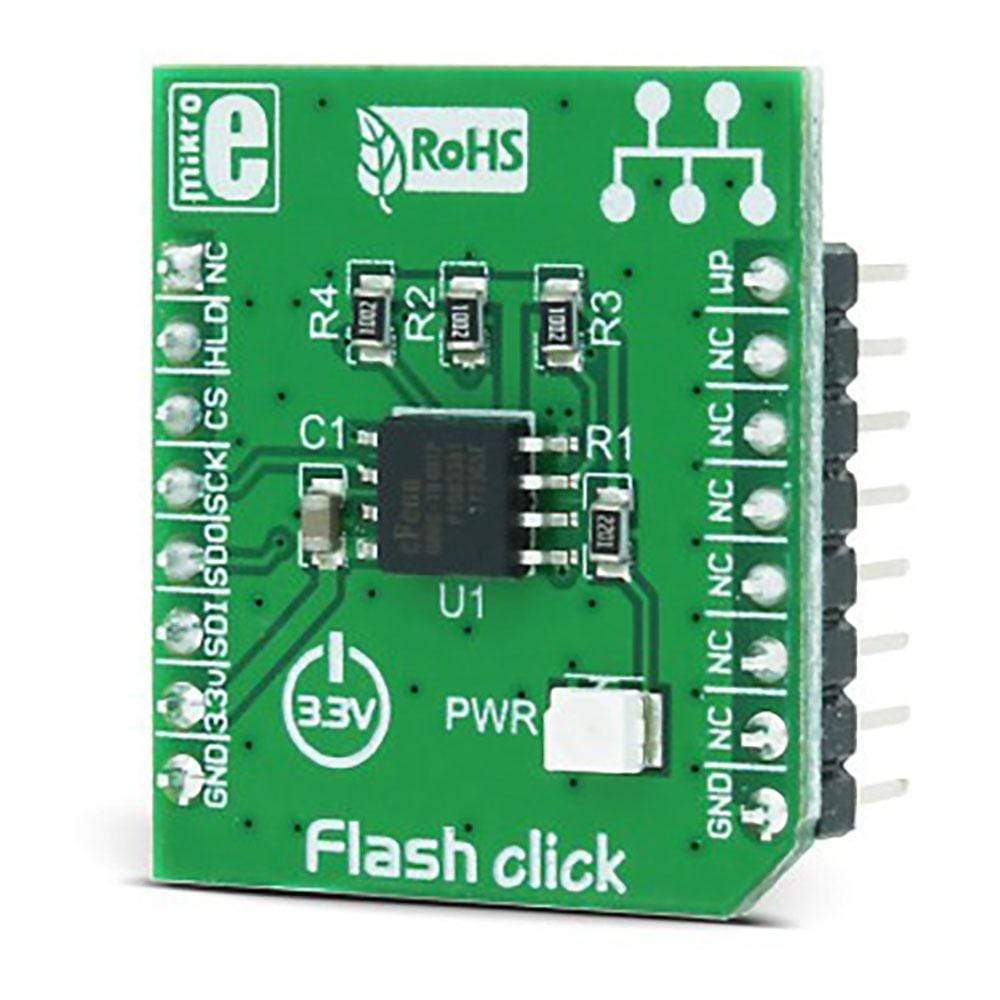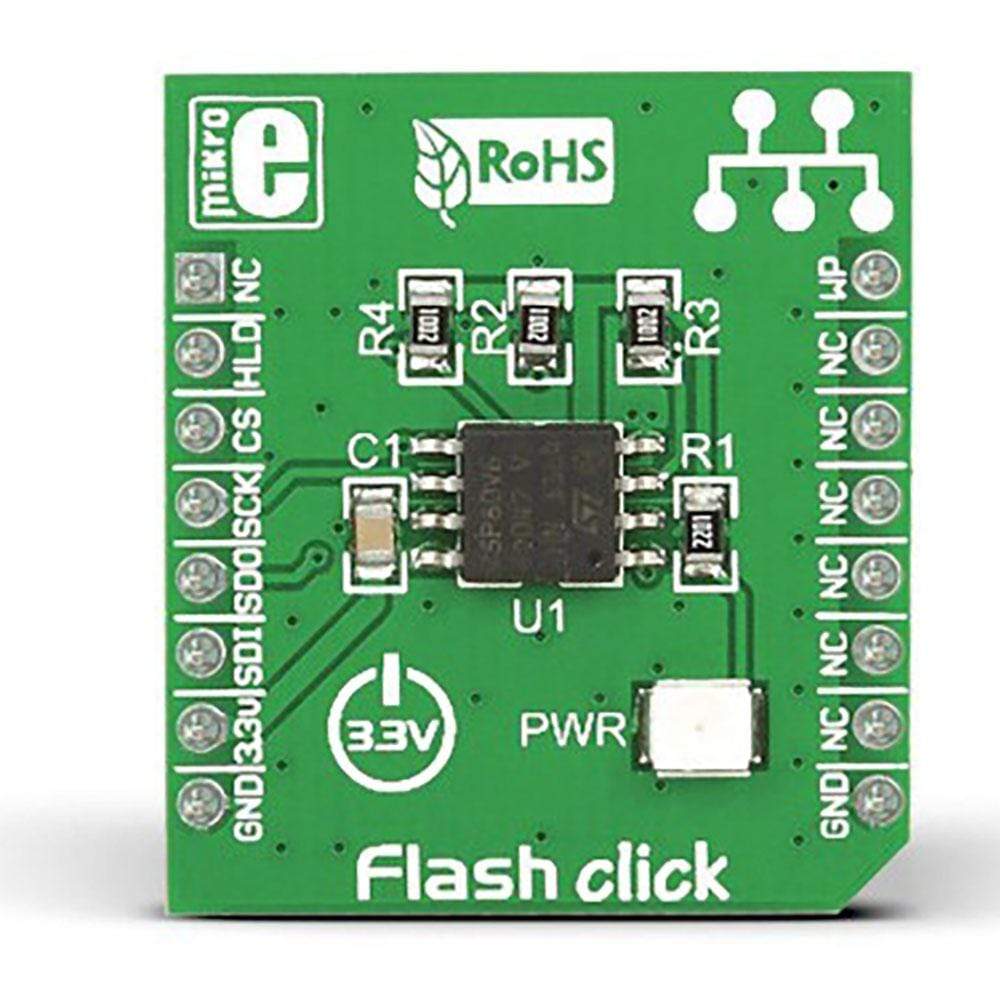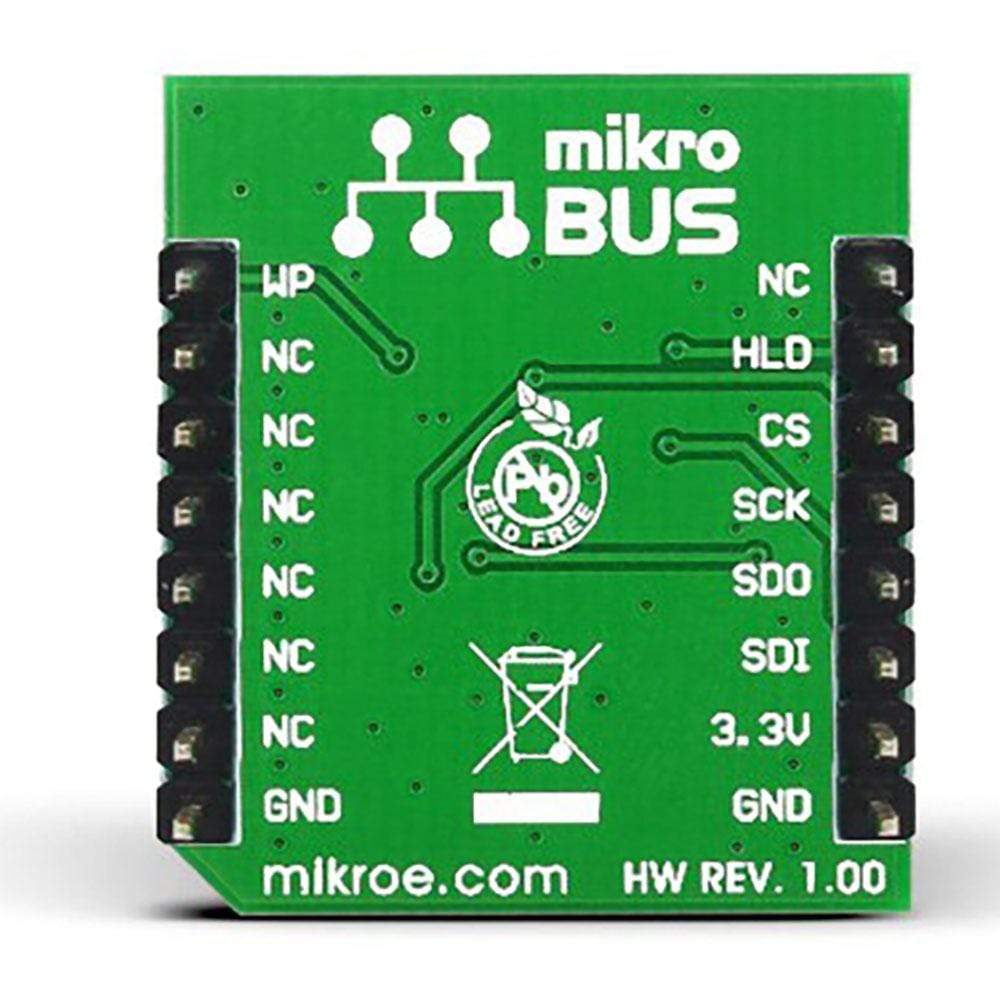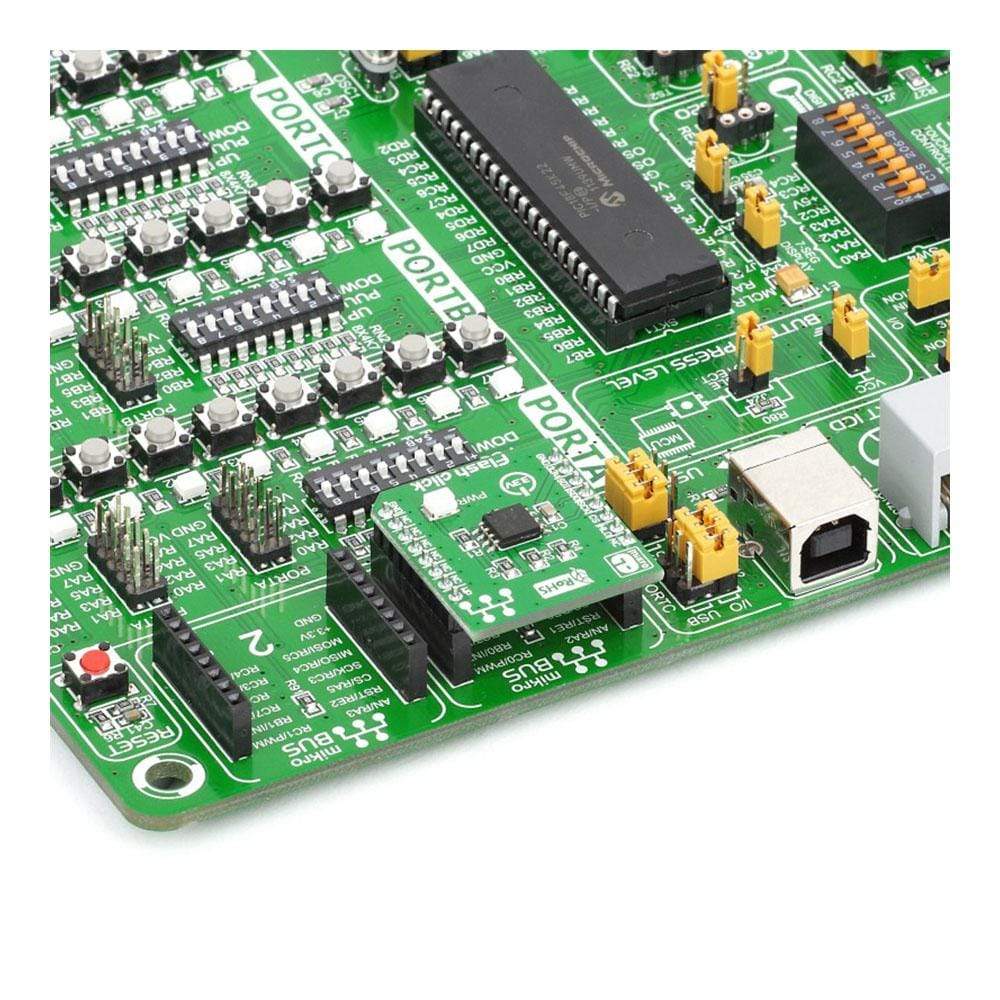



Overview
Introduce additional flash memory to your design with the Flash Click Board™. This small accessory board offers an easy and reliable solution for externally storing large amounts of data to be used in the project. The board features an EN25F80 8 megabit serial flash memory with uniform 4 Kbytes sector architecture. Designed for applications that need high performance and low power consumption, it supports clock frequency up to 75 MHz. EN25F80 module comes with software and hardware Write protection that enables the user to Write Protect all or portion of memory via software. The memory is divided into 16 sectors, each containing 256 pages; each page is 256 bytes wide. Flash Click Board™ communicates with the target board microcontroller through the SPI interface. The board is designed to use a 3.3V power supply only. The green LED diode denotes the power supply status.
The Flash Click Board™ is an ideal choice for a mass storage option in multimedia devices, drives, optical and printing devices.
Downloads
Integrieren Sie mit dem Flash Click Board™ zusätzlichen Flash-Speicher in Ihr Design. Diese kleine Zubehörplatine bietet eine einfache und zuverlässige Lösung zum externen Speichern großer Datenmengen zur Verwendung im Projekt. Die Platine enthält einen seriellen EN25F80-Flash-Speicher mit 8 Megabit und einheitlicher 4-KByte-Sektorarchitektur. Er wurde für Anwendungen entwickelt, die hohe Leistung und geringen Stromverbrauch erfordern, und unterstützt Taktfrequenzen von bis zu 75 MHz. Das EN25F80-Modul wird mit Software- und Hardware-Schreibschutz geliefert, der es dem Benutzer ermöglicht, den gesamten oder Teile des Speichers per Software schreibzuschützen. Der Speicher ist in 16 Sektoren mit jeweils 256 Seiten unterteilt; jede Seite ist 256 Byte breit. Das Flash Click Board™ kommuniziert über die SPI-Schnittstelle mit dem Mikrocontroller der Zielplatine. Die Platine ist ausschließlich für die Verwendung einer 3,3-V-Stromversorgung ausgelegt. Die grüne LED-Diode zeigt den Status der Stromversorgung an.
Das Flash Click Board™ ist die ideale Wahl als Massenspeicheroption in Multimediageräten, Laufwerken, optischen Geräten und Druckgeräten.
| General Information | |
|---|---|
Part Number (SKU) |
MIKROE-1199
|
Manufacturer |
|
| Physical and Mechanical | |
Weight |
0.03 kg
|
| Other | |
Country of Origin |
|
HS Code Customs Tariff code
|
|
EAN |
8606015073941
|
Warranty |
|
Frequently Asked Questions
Have a Question?
Be the first to ask a question about this.




